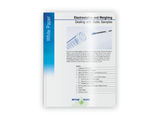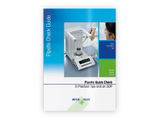To use all functions of this page, please activate cookies in your browser.
my.chemeurope.com
With an accout for my.chemeurope.com you can always see everything at a glance – and you can configure your own website and individual newsletter.
- My watch list
- My saved searches
- My saved topics
- My newsletter
Atmospheric water generator
An Atmospheric water generator (AWG), or atmospheric condenser, is a developing piece of technology with the intent of producing pure drinking water from the humidity of the surrounding air. An AWG operates in a manner very similar to that of a refrigerated dehumidifier: air is passed through a cooled coil, causing water to condense. The amount of water that can be produced depends on the humidity, the volume of air passing through the coils, and the size of the machine. The device is used in situations where pure drinking water is otherwise difficult to obtain or where the population demands are greater than the water tables can sustain or the water table has been or is contaminated, or for natural disaster relief. Additional recommended knowledge
Principle of operationAn AWG uses refrigeration techniques optimized to condense water from air. Blower driven air is drawn into the system through an electrostatic filter. In the machine's exterior housing, a compressor circulates refrigerant through a coil array located in the path of the air providing a temperature differential between the air and coil surface, resulting in condensation. The condensation is funneled into a holding tank. A level switch in the holding tank controls the water making cycle. Water is pump circulated in an ozone generating UV light chamber to kill bacteria and then through high and low density charcoal filters to remove solids and oxygenates. It is finally collected back in the holding tank. The water filtration cycle is both flow and time controlled. Water is dispensed by tap valve diversion. The actual amount of water produced depends on relative humidity and ambient air temperature. Relative humidity measures the amount of water vapour present in the air at a given temperature. The higher the relative humidity and air temperature, the more effective most all of these devices are. Typically these refrigeration-based devices do not work efficiently when the temperature gets below 15.5°C (60°F) or the relative humidity drops below 30%.
DetailsThe cost effectiveness of an atmospheric water generator depends on the capacity of the machine as well as on humidity and temperature conditions. Besides such machines can be powered by alternative energy like solar, wind or even gas or oil fired generators which can be of great help especially when such machines are put into operation for relief efforts.
Cost DetailsThe following is the cost per liter calculation for a typical 120 litres per day AWG with power consumption 2.6kW @ INR(Indian Rupee) 4.5 per kWh. The cost of producing 1 liter of water will typically range from $US0.03 (85-100% RH) to $US0.06 (40-50% RH). Total annual electric costs : 2.6kW × 24 hrs/day × 365 days/year ×INR 4.5 per kWh = Rs.1,02,492/year ≈ US$2,277.60/year (US$1 = INR45).......A Total annual water production : 120 litres per day × 365 days/year = 43,800litres/year..........B COST PER LITER = A ÷ B = US$0.05 Alternative methodsThe methods listed below are not AWGs but other alternative methods of water making.
Source: LexCarb LLC
Source: Sciperio Inc.
Source: AirWater Fridges & Freezers Inc.
|
|||
| This article is licensed under the GNU Free Documentation License. It uses material from the Wikipedia article "Atmospheric_water_generator". A list of authors is available in Wikipedia. |







